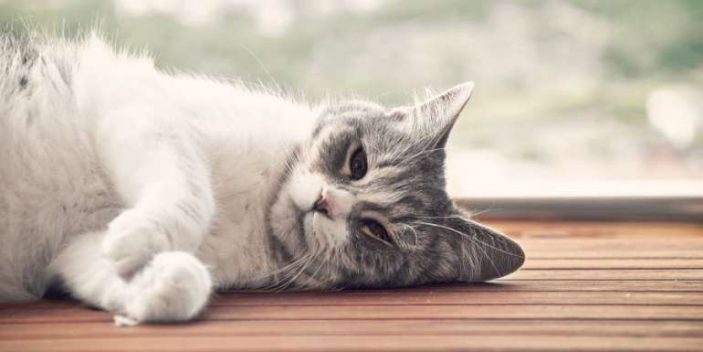Hypophosphatemia in cats refers to severely low phosphate concentration in blood plasma which often results in various clinical signs.
Phosphorus in cats is very important. While looking at phosphorus functions in cats, we noted the various vital roles that this mineral play including forming part of bones after binding with calcium, helping in cell membrane formation, energy metabolism (it’s a component of ATP), among others.
Therefore, being a component of ATP, you expect hypophosphatemia to result in depletion of ATP in cells that require it in high amounts such as skeletal muscle, cardiac, brain, and red blood cells.
Finally, oxygen delivery may also be limited since the oxygen-carrying red blood cells (erythrocytes) may be depleted in case of feline hemolytic anemia.

Causes
- Transcellular shifting – This involves phosphate moving into cells due to the administration of insulin or glucose, respiratory alkalosis or hypothermia (low body temperature).
- Phosphate binders use – their use reduces the amount of intestinal of phosphorus.
- Diuretic phosphate loss – causes excessive urine loss that spurs phosphate loss too including the use of the diabetes mellitus therapy (due to osmotic diuresis and a reduced muscle mass).
- Low phosphorus intake or malabsorption – these two can lead to low levels in the blood. Intake can be worsened by the loss of appetite, inappropriate diets and starvation.
- Vitamin D deficiency – vitamin D plays a role in the absorption of intestinal phosphate
- Reduced bone release or osteolysis – It can be due to an impaired release of parathyroid hormone (PTH) that helps in bone resorption.
- Loss in milk for lactating queens – This can cause also cause low calcium or milk fever in cats as well as low phosphate in the blood.
- Other losses – renal loss due to kidney disease (unable to reabsorb especially in case of proximal renal tubular acidosis), hyperparathyroidism (high PTH leads to increased phosphate renal dumping), diarrhea, vomiting, renal reabsorption inhibitors (including tumors), acidifying diets (have less phosphate to correct acidemia).
- Maldistribution – According to PetMD, “enteral nutrition (tube in the nose) or total intravenous nutrition can be a cause.“
How does Transcellular shifting (translocation) occur?
Firstly, alkalemia resulting from respiratory alkalosis will cause a reduced partial carbon dioxide and an increase the intracellular pH.
The pH rise will “stimulates phosphofructokinase activity which enhances glycolysis and phosphate incorporation into ATP, causing a deficiency and hence some phosphate will move into cells.”[1]
Secondly, glucose or insulin administration forces glucose to go into cells where it will be used in rapid ATP production creating a shortage in cells and thus some must move into cells.
Finally, hypothermia leads to “low phosphate and potassium, high calcium and glucose, acidosis and azotemia,” notes Cornell University College of Veterinary Medicine.
Symptoms
Symptoms expected will closely be related by the primary cause. In case of severe hypophosphatemia (< 1.5 mg/dL in cats), the following symptoms may be noted.
- Red blood cells breakdown or hemolytic anemia
- Urine color change to dark-color or red due to hemolysis of red blood cells which releases hemoglobinuria protein.
- Shallow and rapid breathing, short breath and anxiety due to reduced oxygen supply inside a cat’s body. The shallow breath may be due to respiratory muscles not functioning well.
- Weakness of muscles
- Depression
- Seizures, coma, ataxia and other central nervous system symptoms
Diagnosis
Your vet will want to know the history of your pet including symptoms and diets as well as perform a physical exam, and differential diagnosis to rule other possible cause of these symptoms.
Also, he or she may conduct a blood biochemistry profile, urinalysis, and complete blood count.
During testing, care must be taken since the monoclonal immunoglobulins often result in phosphate precipitating out when certain reagents or analyzers are used, hence giving low parameters.
Urinalysis will reveal urine specific gravity and if it is low, it could be chronic kidney disease and the presence of free thyroxine (T4) can be an indicator of hyperparathyroidism
Treatment and living management
Immediate treatment including hospitalization is necessary if your feline friend has severely low phosphate in the blood. In moderate cases, hospitalization may not be necessary (if he or she is stable).
Treatment will involve treating underlying cause including pausing insulin, enteral nutrition or intravenous nutrition until serum phosphate level returns to normal.
Finally, give your cat an appropriate diet with the required level of phosphorus and in the correct ratio to calcium and continuously monitor phosphate levels if your cat is diabetic and receives insulin treatments.
